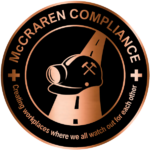
Washington — OSHA conducted 33,401 inspections in fiscal year 2019 – the largest total during the Trump administration.
A Dec. 3 press release from the agency states that a record 1,392,611 workers were trained on safety and health requirements via the various education programs, and its free On-Site Consultation Program identified nearly 138,000 workplace hazards.
“OSHA’s efforts – rulemaking, enforcement, compliance assistance and training – are tools to accomplish our mission of safety and health for every worker,” Loren Sweatt, the agency’s acting administrator, said in the release. “I am proud of the diligent, hard work of all OSHA personnel who contributed to a memorable year of protecting our nation’s workers.”
The total number of inspections is the most since FY 2015, when 35,820 were conducted. The agency conducted 31,948 inspections the next fiscal year, then 32,408 in FY 2017 and 32,023 in FY 2018.
Between FY 2010 and FY 2012, OSHA conducted more than 40,000 inspections each fiscal year and more than 38,000 annually from FY 2003 to FY 2013.
One likely reason for the fewer number of inspections since that stretch is a dwindling number of OSHA inspectors, also known as compliance safety and health officers. The agency had a record-low 875 CSHOs as of Jan. 1, according to a National Employment Law Project data brief issued in March. In an April 3 congressional appropriations hearing, Rep. Rosa DeLauro (D-CT) pointed to a federal hiring freeze during the first year of President Donald Trump’s administration, as well as retirements and resignations, as factors.
To try to counteract that, the Department of Labor committed to adding 26 new full-time equivalent inspectors to the agency for FY 2019 after adding 76 CSHOs in FY 2018.
Then-Secretary of Labor R. Alexander Acosta testified during the April hearing that he expected inspections to increase once the new CSHOs were up to speed. In his written testimony for the hearing, Acosta acknowledged that it could take one to three years to get the inspectors working in the field unsupervised.


